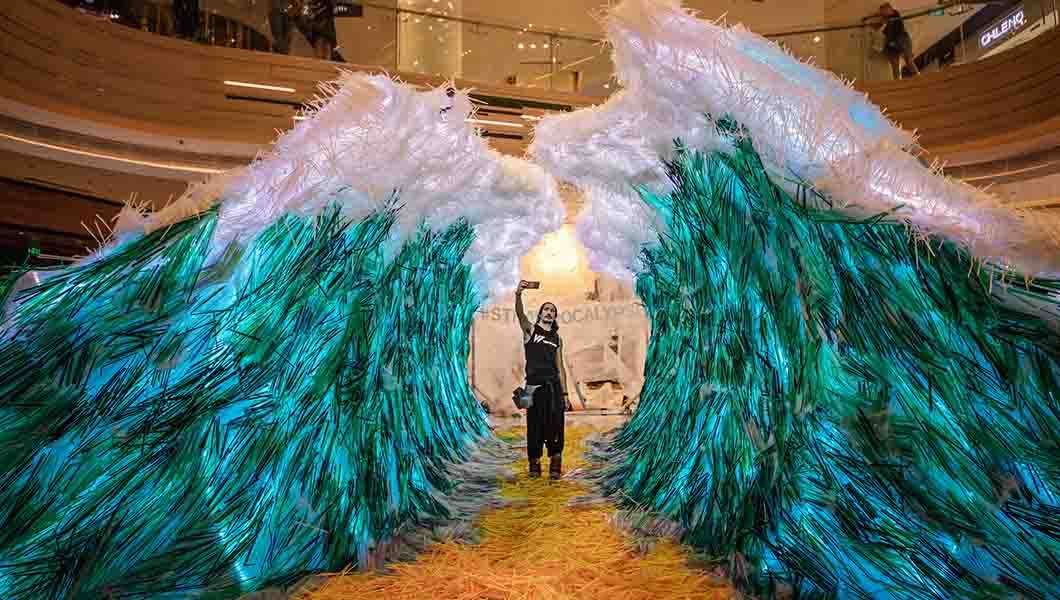Go green and stay sustainable – the green marketing trend

Sustainably-sourced. Eco-friendly. Biodegradable. In 2019, it’s hard to avoid these terms as consumers are urging businesses to take responsibility for their actions.
Unilever reports that a third of consumers are now buying from brands based on their social and environmental impact, and more than one in five will actively choose brands that are transparent about sustainability efforts in their packaging and marketing. With these statistics, it’s not surprising that brands are shaping their marketing campaigns around environmentalism, sustainability and corporate social responsibility.
Here are three key 'Green Marketing' trends that we have seen develop over the past six months:
Environmentally conscious packaging
The demand for environmentally friendly packaging is growing. The damaging effects of single-use plastic is a topic that you can’t get away from these days, whether it be on social media or on the news. To meet consumer demands, brands are gravitating towards reusable and biodegradable packaging to make a positive impact on the planet.
Companies such as Starbucks are leading the pack, committing their environmental strategy on sustainable packaging, planning to eliminate all plastic straws by 2020. The coffeehouse chain is also using green materials to produce, package, and deliver its product to customers. Starbucks have made a big statement in getting the message out, helping to create the largest drinking straw sculpture (supported) made from reclaimed plastics. The company installed used straw collection bins at a number of their stores in Vietnam to create the sculpture which encouraged individuals to say no to single-use plastics, especially straws.
Sustainability partnerships
The crocodile is leaving its iconic spot to 10 threatened species through a partnership with the @IUCN. Help us fight for wildlife conservation worldwide. Click here to discover more: https://t.co/9UhE1vUCel#LacosteSaveOurSpeciespic.twitter.com/PjZMRhdDD1
— Lacoste (@LACOSTE) February 28, 2018
Sometimes organisations simply don’t have to knowledge or resources to successfully demonstrate sustainable practices. In this case, sustainability partnerships are the perfect way to enhance your message. These partnerships involve businesses and non-profits or charities coming together to achieve their sustainability and corporate fundraising goals.
French sportswear brand Lacoste demonstrated eco-chicness, releasing a line of polo shirts last year to highlight the plunging population of endangered animals. The brand replaced their signature crocodile logo with animals facing extinction. All profits from the 1775 polo shirts sold were donated to IUCN in a bid to help them protect these endangered species.
Undo the damage

Many organisations shape their marketing campaigns on how they’re preventing further damage to the environment, but what about taking matters into your own hands and undoing the damage already caused? Consumer can see through whether brands are being genuine about their environmental efforts, and actively helping to reverse pollution and waste is the ultimate act of sincerity.
Recently, local dive centres, the Professional Association of Diving Instructors (PADI) and Project Aware sponsored the most participants in an underwater clean-up (24 hours) at Deerfield Beach, Florida with 633 people participating in the clean-up. Large amounts of debris were removed from waters surrounding the local pier including 9,000 items of marine debris and 3,200 pounds of fishing gear. Their efforts have not gone unnoticed, with leading news stations such as CNN and Forbes covering the event.
It’s clear that a sustainable and environmental focus is not just nice to have for organisations, but a must-have in order to promote their brand and meet consumer expectations.


